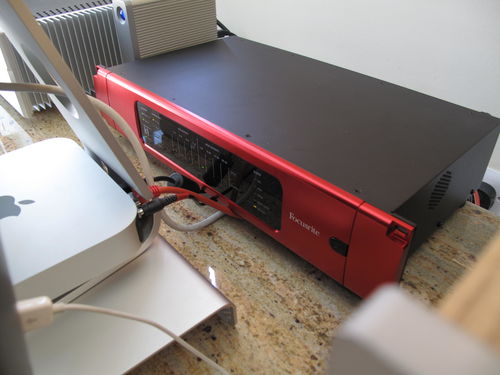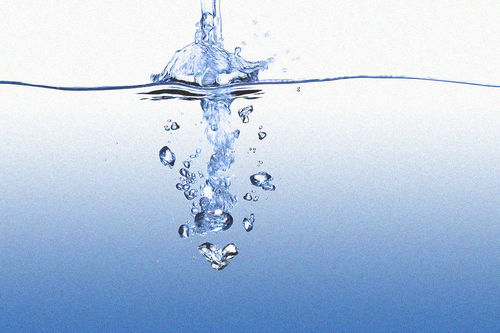Hi Guys
There are some quite active AOIP threads over on head-fi.org, and I wanted to share some of my findings in my personal journey with an as near perfect data transfer system from a music server to the DAC.
Few observations and a summary
1. USB has for me never quite got rid of the digital haze, the reminder it is a digital transport and imparts a character to the music I personally didn't live well with.
2. Relating to this 'issue' in my mind or to my ears, I embarked on the typical external fixer solutions to reduce this effect as much as possible.
3. I was always aware of the 5V feed in USB, the fact it was not designed for high end audio transmission, rather a driverless hot swop connection primarily for camera connection, printed and cheaper top make external drives.
4. The USB bus on a PC or Mac is shared, it gets noise and negative effects form other devices on that bus.
5. USB has limit as to the distance to the DAC or external drive which can cause placement issues and limit the music room layout.
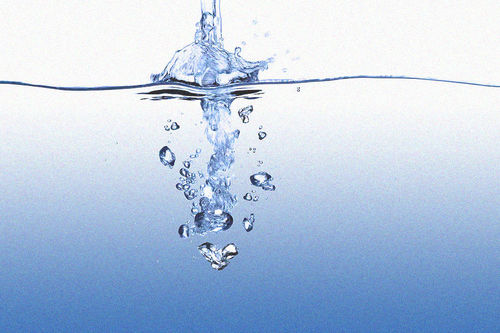

This is my visual analogy of what I hear, USB top, AOIP bottom.
So after owning various Metrum Acoustics DACs that used the Amanero USB board, and later an AMR DP-777, then later still an Audio Note DAC 5 with only SPDIF and AES input I started the complex and messy USB fixer trail.
First off was the Musical Fidelity V-Link. Cheap but not any better than the Amanero board. Next the M2Tech EVO and External Clock. Now this was heading in the right direction. We now have cleaner highs, better soundstage and more layering and 3D presentation. Nest I got 2 x LPS power supplies to feed the 9V DC to the M2Tech stack. Right there is moved into another higher level, less veil and haze, denser colours and more body and speed.
Still, it was barely an improvement over my old CEC CDP on AIFF Redbook.
Next I optimised my Mac Mini 2015 with SSD, 16 Gig RAM and fitted Audirvana+ v 2. Now this is getting interesting. I had stripped the Mac Min right back, taken out the int speaker, taken off or disabled everything that wasn't anything to do with audio.
Nest I tied some different USB - SPDIF convertors such as the Off-Ramp 5 and ~Berkley Alpha USB. Both had a marginal improvement over the M2Tech, but again I was remind each time I was listening to digital, and the lesser recordings where too stressful to really enjoy IMO. I seem very sensitive to treble edge or any kind of digital glaze or noise. Also the bass was improving with each change so far, but was not the kind of tuneful bass you get on a good vinyl rig.
Next I bought the TotalDAC USB cable / filter. This calmed the treble a bit, lost a little in transparency but was warmer sounding and did improve the digital glaze aspect of the sound. But to me, it was a fixer, ager the horse has bolted kind of divide.
Then I demoed the CH Precision C1 DAC.It was using USB and feeding my KGShv Carbon amplifier and Stax 009 headphones. Compared to the AMR and Metrum the C1 was fester, more dynamic and had great bas depth. I had the home demo for 6 hours. The first hour was exciting, but soon I began to realise many Redbook recording had an unnatural treble edge and a upper frequency ringing / overhand. This was apparent on some female vocal albums such as `Cranberries, Ecvanessence Fallen for example. As that demo went on, I started tracking flicking and in the end I was clock watching. It was the sound I prefer unfortunately. However I was informed it is much better on Ethernet than USB.
That got me thinking. Later last year I bought a used Audio Note DAC 5 and then a Rednet 3 AOIP box. It is pro-sumer really, not for home use so much, but as it turned out is fairly easy to set up. The key with it is is uses 1000 BaseT Ethernet and the Dante protocol which is designed for pro audio DAW use. The Rednet 3 also has AES and SPDIF pout for monitoring in a studio setting.
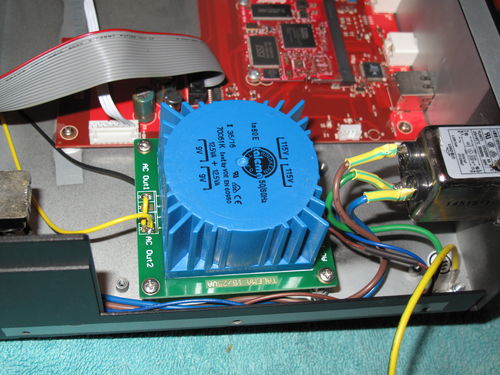
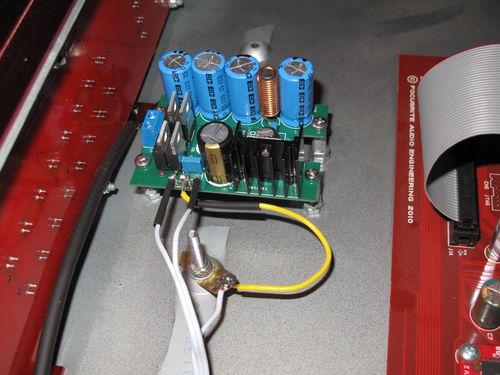
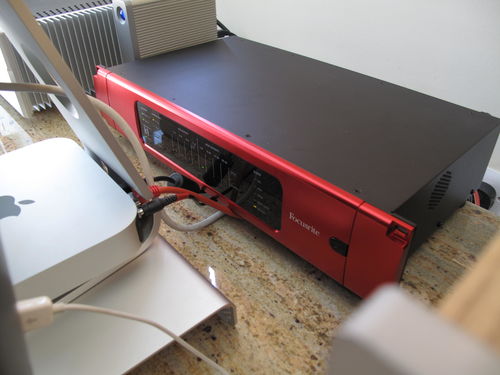
Here is the LPS mod it did.
The Rednet 3 cost me 899 USB from sweet water, and was 100% financed by selling of my USB decrapifier boxes with change left over. I use the supplied CAT 6 cable and installed the free software. I diode get sweet water to remote set up the router configuration using remote app. It took them 10 minutes. Then bingo, I have music.
Wow, immediately that digital glaze I was talking about was gone, the best way to describe it is it sound liquid, smooth, flowing, natural. A good sign is I was suddenly playing everything louder, and bear in mind my speakers are really near field and horns. I get zero hash or fatigue, it is really damb good. The Rednet burnt in for 2 weeks then stabilised, and has been on 24/7 ever since.
I know there are yet more USB fixer out there, ifi purifiers and such. But my view is if you can eradicate the grunge at the source, it is easier to play straight through, less components and devices messing with the signal path, and getting back to the original source material.
There are some caveats with this
1. It is limited to 192K.
2. The Rednet box is quite big and err, bright Red.
3. Sample rate changes need to be reset in software. It take me 20 seconds to do that each time I move from 44.1 to 96K.
Plus points are
1. One box, less leads (expensive) fits nicer on a rack.
2. Fit and forget it basically.
3. Software can be updated online.
4. Really fast latency which will reduce jitter.
There are further tweaks than can take the Rednet even higher.
1. Fit an internal LPS which I have done, cost 130 USD and not difficult to do.
2. Runs of it's internal clock, and can have an external word clock such as the super accurate Mutic unit (900 USD)
So I can faithfully say after the inclusion of the Rednet, my Mac Mini Uptone Audio MMK mod my PC source is now better than my CEC CDP in all areas. One thing that is a standpoint besides 'digital glaze' is the midrange has come though intact, less limped together with the lower ranges. It is here where most of the musical clues reside, so it gives the performance more information, like an in-depth report as opposed to a summary. And the speed and attack has ramped ups LOT, it jumps out of the soundstage and had super quick rise and drop off timing PRaT I guess some call it. Plucking bass lines (such as Level 42, Stanley Clarke) and drum solos are a great example.
I understand this system will not suit everyone, particularly the ones wanting todo DSD or upsample to beyond 192K. I am in the NOS DAC camp and play bit perfect, so it doesn't bother me.
I hope some folk found this useful. It is another route to high end data transmission against a purpose built server and moves away from the obsession of using USB audio.
There are some quite active AOIP threads over on head-fi.org, and I wanted to share some of my findings in my personal journey with an as near perfect data transfer system from a music server to the DAC.
Few observations and a summary
1. USB has for me never quite got rid of the digital haze, the reminder it is a digital transport and imparts a character to the music I personally didn't live well with.
2. Relating to this 'issue' in my mind or to my ears, I embarked on the typical external fixer solutions to reduce this effect as much as possible.
3. I was always aware of the 5V feed in USB, the fact it was not designed for high end audio transmission, rather a driverless hot swop connection primarily for camera connection, printed and cheaper top make external drives.
4. The USB bus on a PC or Mac is shared, it gets noise and negative effects form other devices on that bus.
5. USB has limit as to the distance to the DAC or external drive which can cause placement issues and limit the music room layout.


This is my visual analogy of what I hear, USB top, AOIP bottom.
So after owning various Metrum Acoustics DACs that used the Amanero USB board, and later an AMR DP-777, then later still an Audio Note DAC 5 with only SPDIF and AES input I started the complex and messy USB fixer trail.
First off was the Musical Fidelity V-Link. Cheap but not any better than the Amanero board. Next the M2Tech EVO and External Clock. Now this was heading in the right direction. We now have cleaner highs, better soundstage and more layering and 3D presentation. Nest I got 2 x LPS power supplies to feed the 9V DC to the M2Tech stack. Right there is moved into another higher level, less veil and haze, denser colours and more body and speed.
Still, it was barely an improvement over my old CEC CDP on AIFF Redbook.
Next I optimised my Mac Mini 2015 with SSD, 16 Gig RAM and fitted Audirvana+ v 2. Now this is getting interesting. I had stripped the Mac Min right back, taken out the int speaker, taken off or disabled everything that wasn't anything to do with audio.
Nest I tied some different USB - SPDIF convertors such as the Off-Ramp 5 and ~Berkley Alpha USB. Both had a marginal improvement over the M2Tech, but again I was remind each time I was listening to digital, and the lesser recordings where too stressful to really enjoy IMO. I seem very sensitive to treble edge or any kind of digital glaze or noise. Also the bass was improving with each change so far, but was not the kind of tuneful bass you get on a good vinyl rig.
Next I bought the TotalDAC USB cable / filter. This calmed the treble a bit, lost a little in transparency but was warmer sounding and did improve the digital glaze aspect of the sound. But to me, it was a fixer, ager the horse has bolted kind of divide.
Then I demoed the CH Precision C1 DAC.It was using USB and feeding my KGShv Carbon amplifier and Stax 009 headphones. Compared to the AMR and Metrum the C1 was fester, more dynamic and had great bas depth. I had the home demo for 6 hours. The first hour was exciting, but soon I began to realise many Redbook recording had an unnatural treble edge and a upper frequency ringing / overhand. This was apparent on some female vocal albums such as `Cranberries, Ecvanessence Fallen for example. As that demo went on, I started tracking flicking and in the end I was clock watching. It was the sound I prefer unfortunately. However I was informed it is much better on Ethernet than USB.
That got me thinking. Later last year I bought a used Audio Note DAC 5 and then a Rednet 3 AOIP box. It is pro-sumer really, not for home use so much, but as it turned out is fairly easy to set up. The key with it is is uses 1000 BaseT Ethernet and the Dante protocol which is designed for pro audio DAW use. The Rednet 3 also has AES and SPDIF pout for monitoring in a studio setting.



Here is the LPS mod it did.
The Rednet 3 cost me 899 USB from sweet water, and was 100% financed by selling of my USB decrapifier boxes with change left over. I use the supplied CAT 6 cable and installed the free software. I diode get sweet water to remote set up the router configuration using remote app. It took them 10 minutes. Then bingo, I have music.
Wow, immediately that digital glaze I was talking about was gone, the best way to describe it is it sound liquid, smooth, flowing, natural. A good sign is I was suddenly playing everything louder, and bear in mind my speakers are really near field and horns. I get zero hash or fatigue, it is really damb good. The Rednet burnt in for 2 weeks then stabilised, and has been on 24/7 ever since.
I know there are yet more USB fixer out there, ifi purifiers and such. But my view is if you can eradicate the grunge at the source, it is easier to play straight through, less components and devices messing with the signal path, and getting back to the original source material.
There are some caveats with this
1. It is limited to 192K.
2. The Rednet box is quite big and err, bright Red.
3. Sample rate changes need to be reset in software. It take me 20 seconds to do that each time I move from 44.1 to 96K.
Plus points are
1. One box, less leads (expensive) fits nicer on a rack.
2. Fit and forget it basically.
3. Software can be updated online.
4. Really fast latency which will reduce jitter.
There are further tweaks than can take the Rednet even higher.
1. Fit an internal LPS which I have done, cost 130 USD and not difficult to do.
2. Runs of it's internal clock, and can have an external word clock such as the super accurate Mutic unit (900 USD)
So I can faithfully say after the inclusion of the Rednet, my Mac Mini Uptone Audio MMK mod my PC source is now better than my CEC CDP in all areas. One thing that is a standpoint besides 'digital glaze' is the midrange has come though intact, less limped together with the lower ranges. It is here where most of the musical clues reside, so it gives the performance more information, like an in-depth report as opposed to a summary. And the speed and attack has ramped ups LOT, it jumps out of the soundstage and had super quick rise and drop off timing PRaT I guess some call it. Plucking bass lines (such as Level 42, Stanley Clarke) and drum solos are a great example.
I understand this system will not suit everyone, particularly the ones wanting todo DSD or upsample to beyond 192K. I am in the NOS DAC camp and play bit perfect, so it doesn't bother me.
I hope some folk found this useful. It is another route to high end data transmission against a purpose built server and moves away from the obsession of using USB audio.
Last edited:


